Bloodworms are naturally bright red. Their color is a manifestation of the protein in their blood and skin. Resilient by nature, they can survive and reproduce in polluted water regions with low oxygen levels because of their hemoglobin.
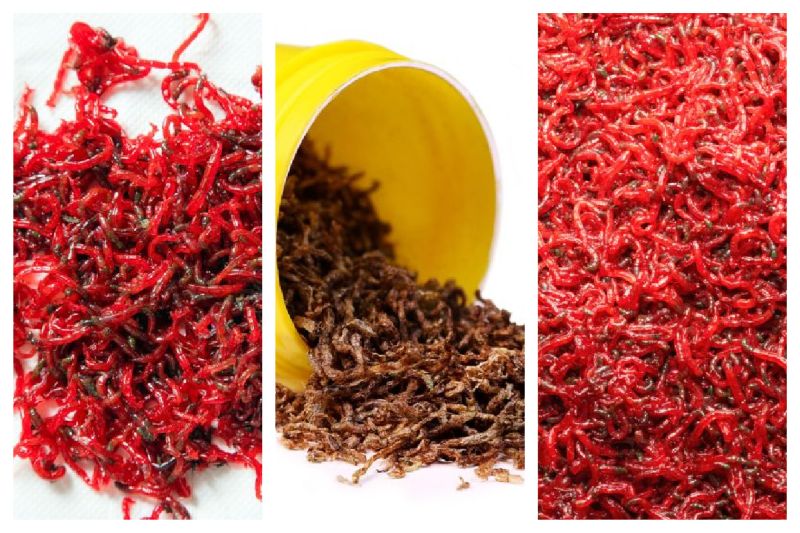
In 2016, marine scientists estimated the bloodworm market had over 120,000 tons of worms, valued at $7.5 billion, and were mainly used for bait.
Bloodworms are a popular food source for tropical fish. They can be found in shallow water and damp regions worldwide. They are not limited to any particular areas of the world.Their shape and size depend according to region. For example, bloodworms on the East Coast in the United States include Polychaeta, Glyceridae, Glycera, and can grow up to 15 inches in length.
Bloodworms are a favorite delicacy among freshwater and saltwater fish. Bloodworms are difficult for picky eaters to deny, especially when hungry. Some fish are known not to eat pellets or flakes, but bloodworms are guaranteed to satisfy most appetites.
Aquarists can choose from a variety of bloodworms, but their availability depends on the region.
Aquarium fish eat bloodworms that are live, frozen, or freeze-dried. The most popular types of bloodworm food include small red larvae and genus Glycera.
Goldfish, calare, cichlids, and discus enjoy eating bloodworms. The bloodworm is a primary source of marine sustenance as almost every fish breed will eat them.
Bloodworms contain iron, which can help your fish remain healthy. They are the preferred food choice among discus, guppies, and bettas. New aquarists often overfeed their fish with bloodworms – a practice that can have severe consequences. What bloodworms make up for in iron and protein, they lack in amino acids, minerals, and vitamins.
Live Bloodworms
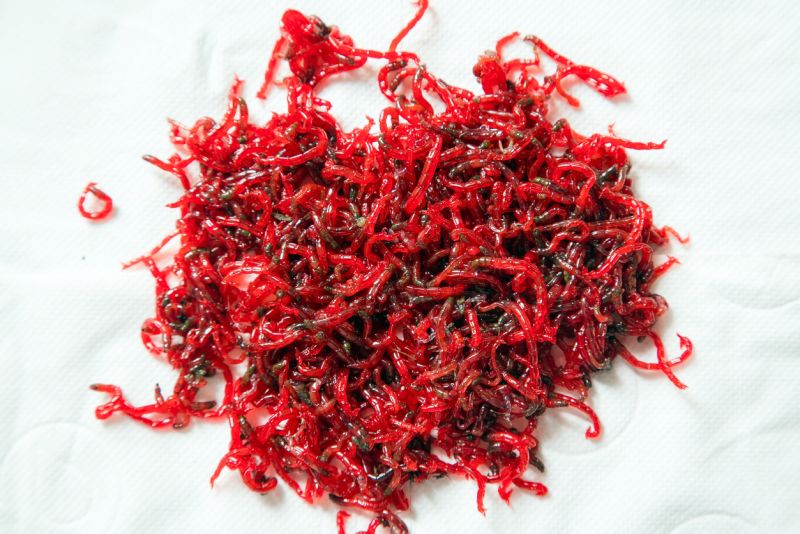
Bloodworms are best served live but understand this isn’t an easy task. They have an average lifespan of less than two weeks. After you’ve found bloodworms to feed your fish with, you’ll need to use them within three days. Live bloodworms cannot be stored for long periods.
CAUTION: Infected live bloodworms can destroy an entire fish collection.
Make sure you conduct due diligence on your local bloodworm vendors. Fresh bloodworms are more nutritious than their frozen counterparts, but if your vendor does have not have a good reputation then it wouldn’t be worth the risk to discover if their bloodworms weren’t healthy.
Live bloodworms are typically sold in plastic containers. Keep in mind that bloodworms sold in small plastic bags will only live for a very short period. The shelf life of bagged bloodworms is only one week. When feeding them to your fish, do not pour the worms from their container directly into your aquarium. You must follow a strict protocol before feeding bloodworms to your fish.
First and foremost, you’ll need to wash the bloodworms and remove dirt or germs from the water in their container. Bloodworms carry bacteria that can make your fish sick. Take your time and be sure to clean the bloodworms thoroughly.
Afterward, store them in a cold temperature setting. A refrigerator will work fine. It is important to fill the plastic container with water to the top and make sure the lid fits securely over it.
Frozen Bloodworms
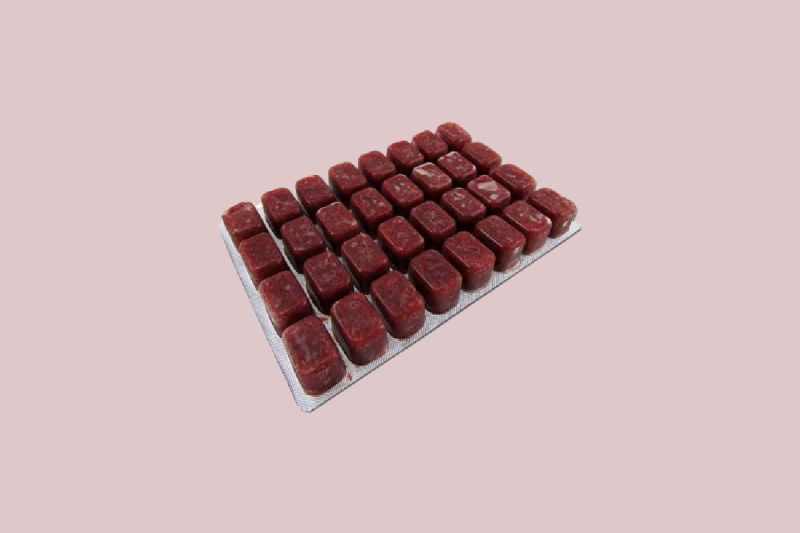
Usually sold in frozen blocks or thin sheets, frozen bloodworms are another popular food choice among aquarists. The frozen worms can be stored upwards of six months from the date on the packaging.
Frozen bloodworms are safer than fresh worms as they have a lower risk of spreading infections, diseases, and parasites inside fish tanks.
Before feeding your fish frozen bloodworms, they must first be thawed. Fish do not naturally eat frozen food as it’s harmful to their health. When fish consume frozen food, the cold temperatures can shock and kill them.
During the thawing process, fill a container with water from your aquarium for the fish designated to eat the bloodworms. First, place the frozen bloodworm block in the water. After it melts, the worms will thaw. Use a strainer to remove the bloodworms from the water and empty the container.
You should make it a point not to feed your fish too many bloodworms. Overfeeding is a common mistake made among amateur aquarists. While there are general issues that occur due to extra food left in a tank. Decaying bloodworms can disrupt water levels and have fatal consequences for your fish.
A reliable practice to determine how much you should feed your fish is to observe them eating after you’ve fed them with bloodworms. You should monitor the eating habits of your fish.
With bloodworms, whatever your fish don’t eat, make sure you throw away. Do not let uneaten bloodworms sit at the bottom of your fish tank.
Freeze Dried
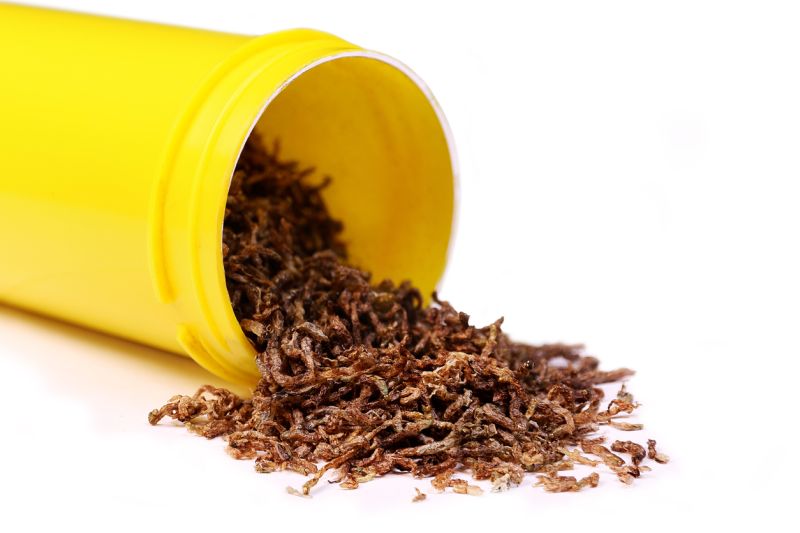
Freeze-dried bloodworms do not require careful storage and have a longer shelf-life. Because they are freeze-dried, cross infections aren’t a risk. This also doesn’t contaminate tank water, unlike other fish food made with compound additives. Popular sources for harvested bloodworms come from cold climate regions like northern China and Siberia.
Frozen Dried Bloodworms
Frozen dried bloodworms are also popular. Although less nutritious than their live or frozen counterparts, they still offer the right nutrients.
To prepare freeze-dried bloodworms, you’ll need to soak them in water for five minutes before placing them in your tank. The dried bloodworms do not contain moisture, making it difficult for your fish to eat them.
Another concern and one that aquarists are facing more often is how bloodworms cause allergic reactions.
Bloodworm Allergies
As hemoglobin is the source of a bloodworm’s coloration, it’s also connected to allergies. The hemoglobin functions as an aggressive oxygen hoarder, allowing the worms to thrive in oxygen-deficient environments.
As 2020 was a record-breaking year for the aquarium industry due to Covid-19 lockdowns, demand for bloodworms skyrocketed. Meanwhile, aquarists were learning the hard way if they had bloodworm allergies.
Although freeze-dried bloodworms are popular, aquarists should practice extra caution when feeding them to their fish. As a helpful tip, inhaling dried bloodworm particles can trigger allergic reactions.
According to a recent report, “With the increasing popularity of aquariums, allergy to chironomids may become less of a novelty and become something clinicians should be aware of when searching for the cause of a patient’s atopic symptoms.”
Cross sensitivity is possible as discovered by recent reports, but those who are allergic to mites or cockroaches, an increased risk to bloodworms can be expected.
Bloodworm Gels
Bloodworm gels offer a secondary option. Some fish can’t eat pellets or flakes, while some fish keepers cannot store live food, bloodworm gels can be a convenient alternative.
Gels contain plenty of vitamins and nutrients, essential to healthy growth.
Feeding
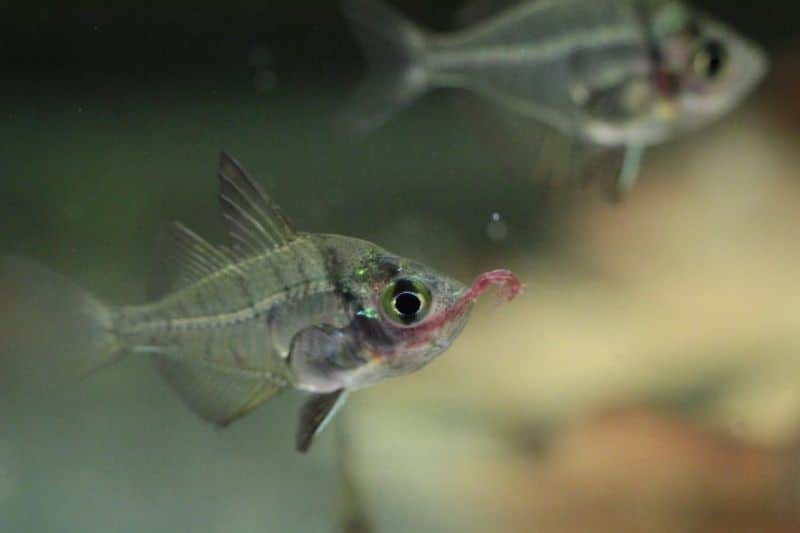
You should feed your fish according to their size and how often they eat. With some species, multiple feedings per day may be required. If your fish are not responding to the bloodworms, wash them separately using freshwater before feeding them to your fish.
As bloodworms possess high protein levels, it’s a good idea to check the feeding recommendations beforehand. As a common practice, most aquarists will feed bloodworms to their fish once or twice weekly. With most fish, it is easy for them to suffer from constipation if they have been overfed.
When determining how many bloodworms to feed your fish, you’ll need to monitor how much they can eat within three minutes or observe how long it takes before their stomachs begin to bulge. Whichever happens first, do not feed them beyond either point. Overfeeding can jeopardize health and lead to fatal complications.
When feeding your fish bloodworms, make sure you throw away what they don’t eat. Do not allow uneaten bloodworms to sit at the bottom of your fish tank.
Bloodworm Breeding
Nobody wants their fish to become ill from outside influences. Live bloodworms are dangerous in this regard, so fish keepers have resorted to raising bloodworms themselves.
Although breeding bloodworms wasn’t a common practice, it has become more popular since the Covid-19 outbreak.
Bloodworms aren’t exactly the safest creatures. They can and will bite people. Their bites often cause an allergic reaction due to their venom. So, when handling bloodworms, you must wear gloves.
For bloodworms to breed, they require an environment that will allow their eggs to mature and hatch. This too can be problematic as they can easily escape.
One common method is to use a plastic food storage container for your bloodworm eggs. First, you’ll need to combine eggs with soil inside the container. Within a few days, the eggs will hatch. Next, feed the hatchlings powdered food and animal manure until they are big enough to feed to your fish.
Harvesting Bloodworms
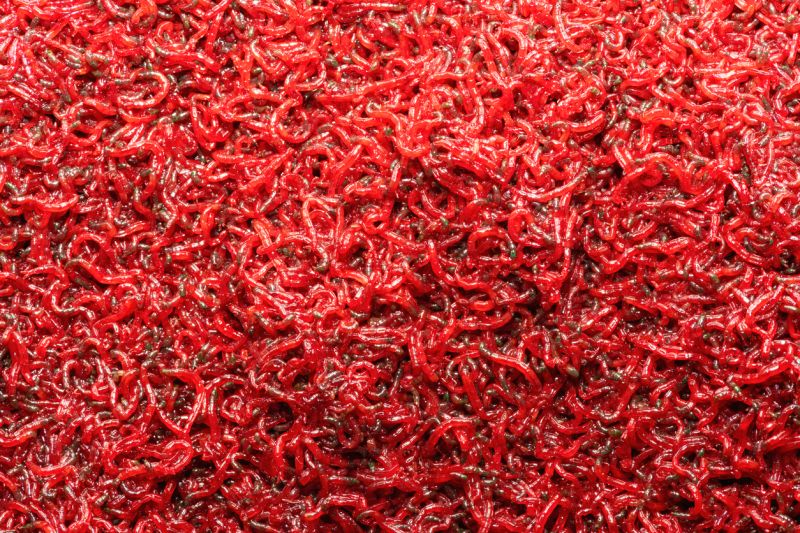
Bloodworms cannot survive in aquariums. They live on land and require oxygen to survive. Even if you buy live bloodworms and release them into your aquarium, they will eventually die as they are incapable of surviving underwater.
However, bristle bloodworms can survive in certain aquariums. For example, the golden bristle thrives in marine water seabeds. The species require an active environment for survival. They would also need a saltwater tank and have access to a separate food source. Saltwater marine life are natural predators and live off bristle worms, so they wouldn’t survive long when sharing a tank with fish.
Food Alternatives
As bloodworms offer certain risks, some aquarists will choose not to feed them to their fish. For those who wish to explore other feeding options, similar food items are available.
For example, brine shrimp contain lipids, vitamins, omega one, and essential amino acids and are favorable among all fish.
Amano shrimp is also a healthy option. This species offers nutritional value and can safeguard against algae, thus keeping your tank clean and healthy.
Conclusion:
The global bloodworm population has decreased dramatically since Covie-19 emerged. The bloodworm is an essential part of the world’s ecosystem, and without them, natural habitats would suffer from an imbalance.
Today, a shortage is underway and bloodworm farmers are using extreme or illegal methods to extract the creatures from ocean floors and shallow riverbanks. As such practices continue, along with rising demand among aquarists and leisure fishermen, fish keepers might not have a choice but to start harvesting bloodworms themselves if they want their aquarium collection to continue eating them.

